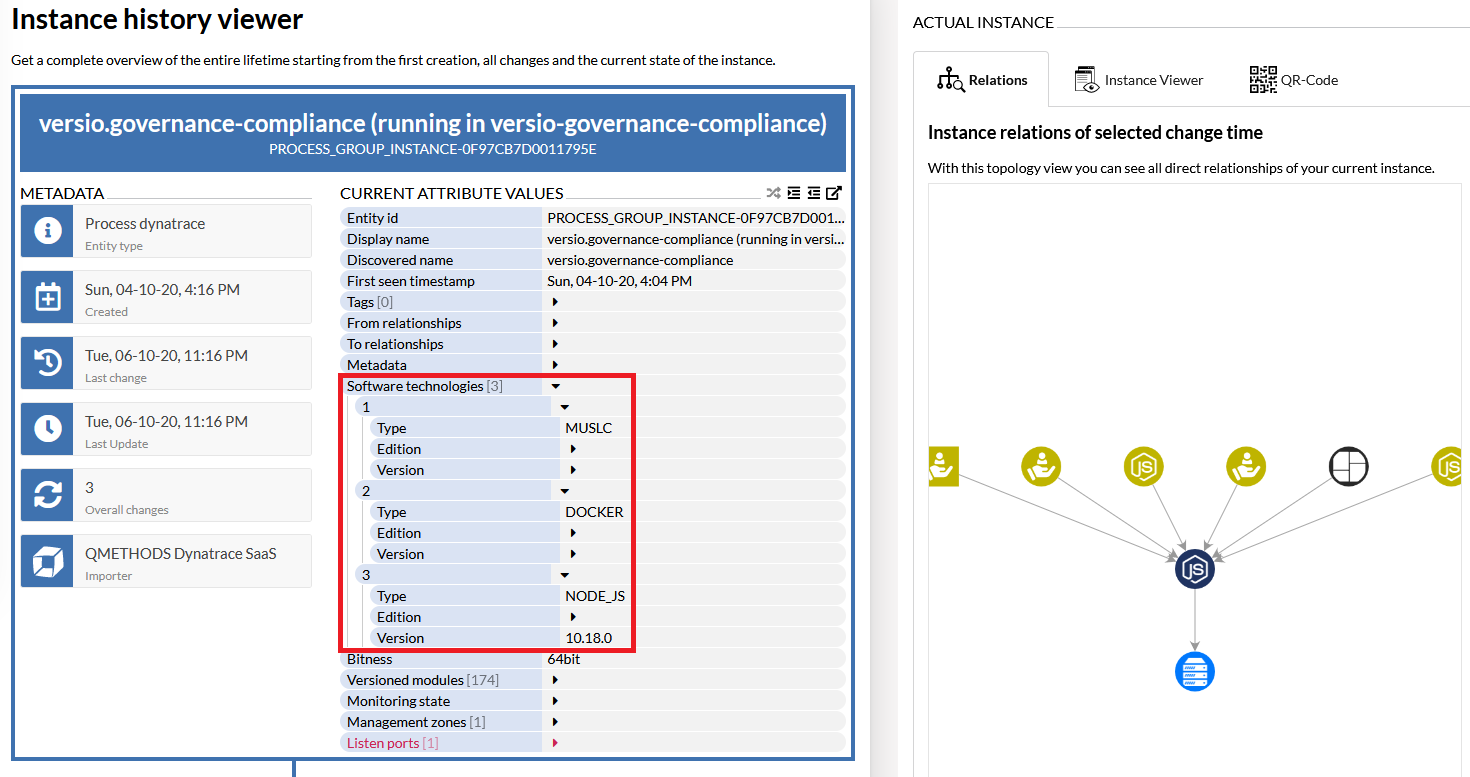- Dynatrace Community
- Dynatrace
- Ask
- Open Q&A
- Software technology detection
- Subscribe to RSS Feed
- Mark Topic as New
- Mark Topic as Read
- Pin this Topic for Current User
- Printer Friendly Page
- Mark as New
- Subscribe to RSS Feed
- Permalink
01 Oct 2020 08:55 AM
We use the attribute values "software-technology" from the Dynatrace API (host, process) to implement specific use cases in the area of IT security and enterprise architecture.
The following questions arise for us:
- Apparently the type and version for a process can only be determined for certain technologies. Why is this so or how are the type and version determined?
- We see that in the life cycle of a process the version is not available at a later point in time. What could be the reason for this?
Can anyone give us insights into this? Thanks!
Chief Technology Officer at Versio.io
A Stargarderstr.10, 10437 Berlin, Germany ¬
P +49-30-22198651 ¬
M +49-178-8380495 ¬
E matthias.scholze@versio.io ¬
W www.versio.io ¬
Solved! Go to Solution.
- Labels:
-
oneagent
-
process groups
- Mark as New
- Subscribe to RSS Feed
- Permalink
06 Oct 2020 03:04 PM
Here is a link to the supported technologies: https://www.dynatrace.com/support/help/technology-support/supported-technologies-and-versions/
- Mark as New
- Subscribe to RSS Feed
- Permalink
06 Oct 2020 03:20 PM
Thanks, Chad,
my questions focused more on the recognition mechanism. How can Dynatrace determine the type, edition and version of a process or service?
The information is stored in an array and I would also like to understand ...
* why the type, edition and version cannot always be determined?
* whether the order has any meaning?
I have attached a screenshot from Versio.io, which we used to process the Dynatrace data via API.

Chief Technology Officer at Versio.io
A Stargarderstr.10, 10437 Berlin, Germany ¬
P +49-30-22198651 ¬
M +49-178-8380495 ¬
E matthias.scholze@versio.io ¬
W www.versio.io ¬
- Mark as New
- Subscribe to RSS Feed
- Permalink
06 Oct 2020 03:33 PM
Ahh I see. Im not sure how the system detect this information other then maybe a repository or some type of detection based off of log details etc...
- Mark as New
- Subscribe to RSS Feed
- Permalink
06 Oct 2020 09:38 PM
Based on my experience the technology and versions are detection rules are "hardcoded" in the agent itself based on the known technologies based on the detection of the process being started. For the detail, you would most likely need to talk to PM or developers of OneAgent process agent. It is not public. For some generic technologies such as Apache HTTP / JVM / NET this is quite straightforward.
I don't think the order does any sense. It's just an array of objects representing technologies.
If the version is not available using API at some point and the process group instance still exists, then I believe this is a bug and should be reported.
- Mark as New
- Subscribe to RSS Feed
- Permalink
07 Oct 2020 01:57 PM
The OneAgent does technology detection in multiple ways. Some of which are:
- When native libraries are loaded (e.g. glibc, musllibc, ...)
- When managed libraries / packages / classes are loaded
- When certain methods are invoked the first time (e.g. sometimes the presence of a library does not really mean it's used at all)
- Very specialized logic (e.g. determining the proper .NET version is more complicated than you might think ;))
All of these tech detections are based on hardcoded mechanisms & rules. Most tech detections do report edition/version but some don't implement that. That can be because it's too complex or too much overhead to get the version.
It can also make a difference if "deep monitoring" is enabled, as some tech detections can only be done with Code Modules.
That being said, some Code Modules employ "generic" package reporting. That means they just report all managed packages that are being loaded (no hardcoded rules). This is done for
- Node.js packages (with versions)
- Go packages
- (NXING, Apache) webserver modules
Does this explanation help you?
We see that in the life cycle of a process the version is not available at a later point in time. What could be the reason for this?
This should not happen and sounds like a bug.
- Mark as New
- Subscribe to RSS Feed
- Permalink
13 Jul 2021 10:19 PM
Hi Christoph,
that's kind of what I had in mind. Thank you for your explanation!
Regards Matthias
Chief Technology Officer at Versio.io
A Stargarderstr.10, 10437 Berlin, Germany ¬
P +49-30-22198651 ¬
M +49-178-8380495 ¬
E matthias.scholze@versio.io ¬
W www.versio.io ¬
